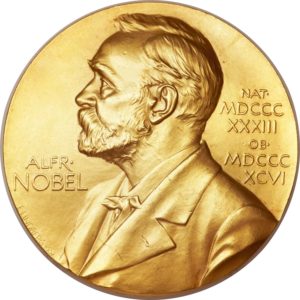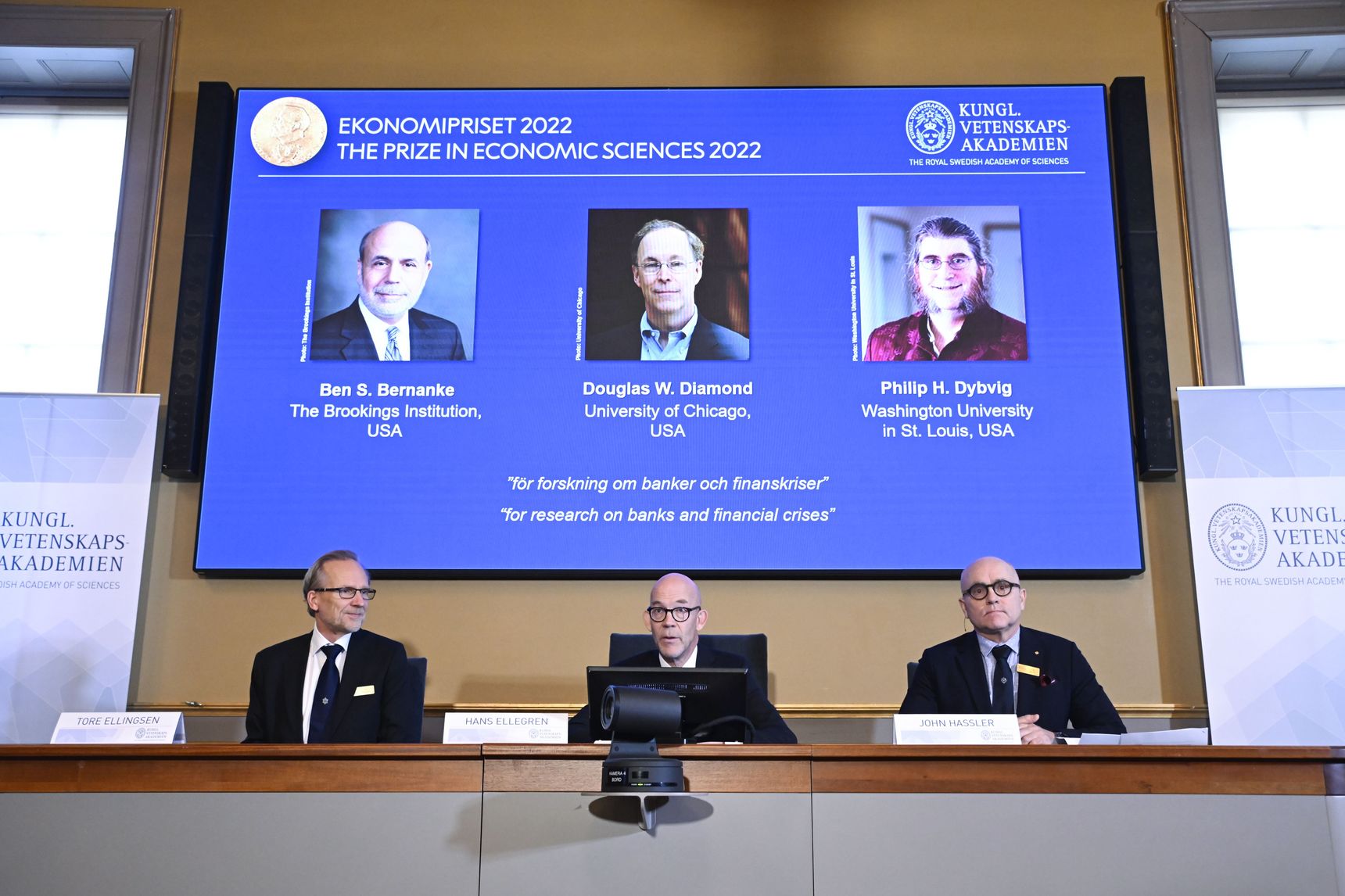Now that the 30 days are up, I’m posting my whole WSJ op/ed on the latest winners of the Nobel Prize in economics, written the morning the prize was announced.
An Economics Nobel for and by Central Bankers

The winners hold views on dealing with financial crises that many monetary economists find strange.
By David R. Henderson
Oct. 10, 2022 6:34 pm ET
The committee that awards the Nobel Prize in economics announced Monday it has chosen three U.S. economists for the 2022 prize: former Federal Reserve Chairman Ben S. Bernanke, Douglas W. Diamond of the University of Chicago and Philip H. Dybvig of Washington University in St. Louis. The award is for “research on banks and financial crises.” The committee praised the winners for doing work “of great practical importance in regulating financial markets and dealing with financial crises.” Many monetary economists would disagree.
A careless reader of Mr. Bernanke’s prize-winning work might have seen it as adding a few details to Milton Friedman and Anna J. Schwartz’s 1963 book, “A Monetary History of the United States, 1867-1960.” In fact, it was quite different. “I would like to say to Milton and Anna: Regarding the Great Depression. You’re right, we did it. We’re very sorry. But thanks to you, we won’t do it again,” said Mr. Bernanke, then a member of the Fed’s board of governors, at Friedman’s 90th birthday party in 2002. Unfortunately, as Fed chairman, Mr. Bernanke, with his fellow Fed governors, did do it again.
The main conclusion that Friedman and Schwartz reached in their analysis of the Depression is that the Fed, by failing to act as the lender of last resort, let the money supply contract by 30% between 1929 and 1933. Yet, in explaining its choice for this year’s award, the Nobel committee writes, “Prior to Bernanke’s [1983] study, the general perception was that the banking crisis was a consequence of a declining economy, rather than the cause of it.” That would probably surprise even Mr. Bernanke, who, as noted, put great weight on the Friedman/Schwartz insight.
The difference between the Bernanke and Friedman/Schwartz views was that Mr. Bernanke thought providing more liquidity during a crisis wasn’t enough; he emphasized the importance of salvaging particular financial intermediaries, even if some of them arguably should have gone bankrupt. While his academic work on this issue was deep and impressive, it unfortunately caused him, as Fed chairman, not to focus on liquidity during the financial crisis. Many monetary economists at the time, including Jeffrey Hummel, then of San Jose State University, and Scott Sumner, a Bentley University economist who had studied under Friedman, recognized that the key was expanding the money supply rather than choosing specific firms to help.
As Mr. Hummel pointed out in 2011, Mr. Bernanke didn’t expand the money supply enough. Quantitative easing, which expanded the money supply, got all the press. Less discussed were two Bernanke initiatives that choked off the increase in the money supply. One was the sale of Treasury securities, which removed from the economy much of the money the Fed had injected in 2008 via the Bear Stearns bailout and the Term Auction Facility. Economists call this “sterilization.” The result was that in the year ending August 2008, the monetary base (currency plus bank reserves) had increased by less than $20 billion, or 2.24%. Had Mr. Bernanke simply increased the money supply substantially, as Alan Greenspan had done in response to the 1987 market crash, the 2007-09 recession would have been shorter and shallower. The second measure restraining liquidity was Mr. Bernanke’s 2008 choice to pay interest on bank reserves, which caused banks to sit on reserves rather than lend them out.
As for Messrs. Diamond and Dybvig, their 1983 model purports to give a theoretical explanation of how bank runs occur, but what it calls “banks” are like no banks we know of. As Lawrence H. White of George Mason University points out in his 1999 book, “The Theory of Monetary Institutions,” the model imagines an economy with a single bank that doesn’t make loans and doesn’t issue checking accounts. The reason for bank runs, according to the model, is that investors (not account holders, since there are none) get nervous and try to cash in their investments. The Diamond/Dybvig model uses this bank-run potential to justify deposit insurance.
Mr. White points out that there are ways to make actual banks “run-proof.” One is to make checking accounts more like money-market funds. While the Fed, mistakenly in my view, opposed “breaking the buck” during the financial crisis, allowing money market funds to be redeemed at 97 or 98 cents on the dollar would have stopped a run. Another way to prevent runs is for banks to stipulate that depositors can’t access their deposits until they mature. Yet another, which happened before the Federal Reserve was founded in 1913, is to suspend convertibility of deposits into currency. That way, people could still write checks, but the bank, if simply illiquid but not insolvent, wouldn’t suffer a loss.
The Nobel Prize in economics is funded not by the Nobel Foundation but by Sweden’s central bank. I don’t usually think that matters, but in this case I wonder if it does. The 2022 award seems to be an affirmation by central bankers of the value of central banking.
Mr. Henderson is a research fellow with Stanford University’s Hoover Institution and editor of the Concise Encyclopedia of Economics.


READER COMMENTS
Spencer
Nov 14 2022 at 3:25pm
It’s astonishing that Volcker, Greenspan, Bernanke, Yellen, and Powell have no idea what monetarism is.
Alan Blinder said: “monetarism made precise control of money growth harder than need be.” He said: “when you don’t know what is happening to the demand for money, it is hard to formulate sensible targets for the supply of money”
Greenspan said: “the relationship [between money growth and economic growth] has completely broken down”.
Monetarism involves more than “watching the money supply”, it involves controlling it properly. Monetarism involves controlling total legal reserves, not nonborrowed reserves.
Why did Volcker fail? This was due to Volcker’s operating procedure. Volcker targeted non-borrowed reserves (@$18.174b 4/1/1980) when at times over 100 percent of total reserves (@$44.88b) were borrowed (i.e., absolutely no change from what Paul Meek, FRB-NY assistant V.P. of OMOs and Treasury issues, described in his 3rd edition of “Open Market Operations” published in 1974).
Comments are closed.